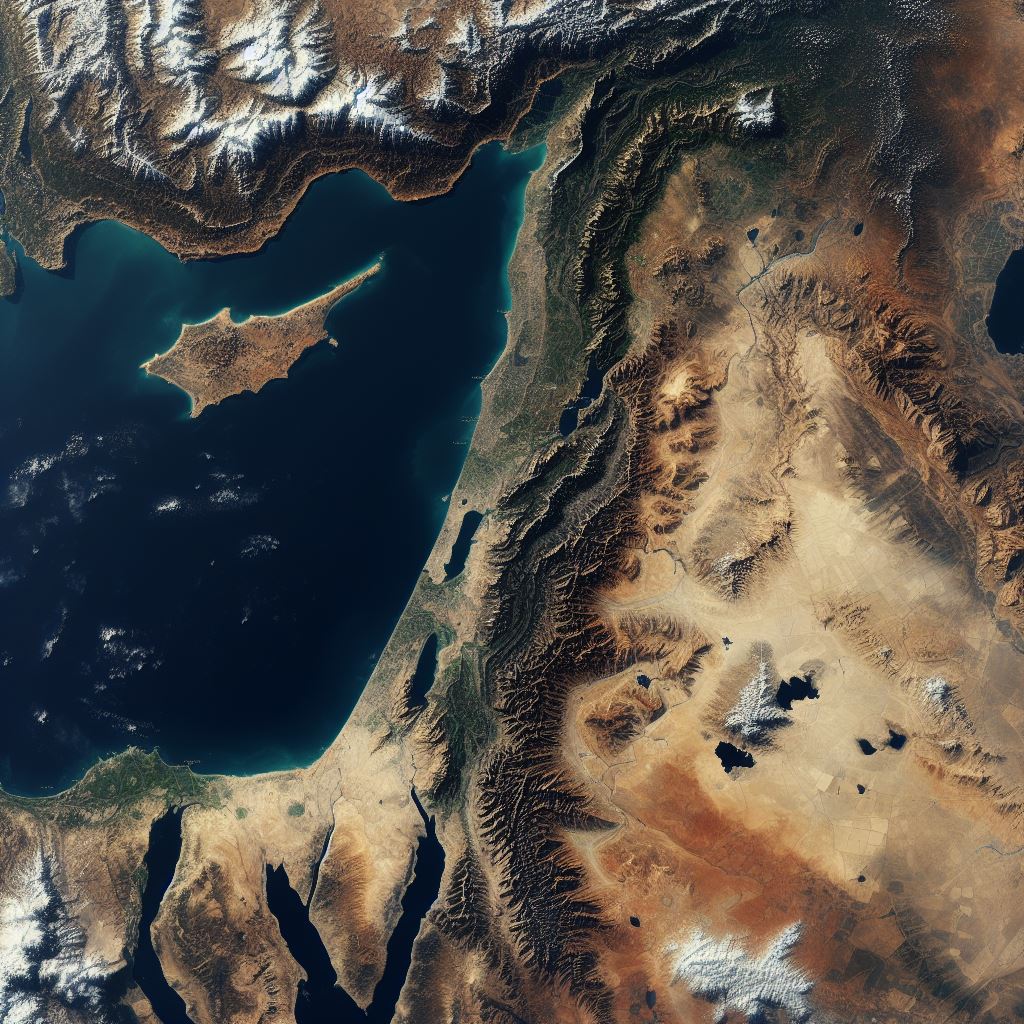History of The Levant: who has right to this land

The Levant, a region spanning modern-day Israel, Palestine, Lebanon, and Syria, has been a contested land for thousands of years. The Levant is considered by many to be the cradle of the three Abrahamic religions: Judaism, Christianity, and Islam. Being the center of the world for trade and a strategic geo location, the Levant is a territory fought over throughout history by many, leading to a complex and often contested narrative.
Canaanites: The First Inhabitants
The Canaanites were one of the earliest civilizations to inhabit the Levant. They were a Semitic people who spoke a language similar to Hebrew and lived in the region around 3000 BCE. The Canaanites were skilled farmers and traders, and they built cities and fortresses throughout the region. They also worshipped a pantheon of gods and goddesses, including Baal and Asherah.
Israelites: The Promised Land
The Israelites, led by Moses, entered the Levant around 1200 BCE. They claimed the land as a divine promise, and they believed that it was rightfully theirs. The Israelites were a monotheistic people, worshipping a single God, Yahweh. The Canaanites were largely assimilated or exterminated by the Israelites. They built temples and cities, including Jerusalem, and they established a complex system of laws and traditions.
Hittites: The Northern Neighbors
The Hittites were a powerful empire that controlled much of modern-day Turkey and Syria. They entered the Levant around 1600 BCE and established a series of vassal states in the region. In 12th century BC the Israelites under Merneptah were defeated by the Hittites at the Battle of Kadesh-barnea (Numbers 13:33) The Hittites were skilled in agriculture and metalworking, and they built a complex system of laws and traditions. They also worshipped a pantheon of gods, including the sun god, Shamash.
Philistines: The Sea Peoples
The Philistines were a group of seafaring people who entered the Levant around 1100 BCE. They were a powerful military force, and they quickly established themselves as a major power in the region. The Philistines were skilled in metalworking and charioteering, and they built a series of fortified cities along the coast. They also worshipped a pantheon of gods, including Dagon and Baalzebub.
Palestinians:
The Palestinians have a complex lineage, with connections to both the Cananites and the Israelites and the Arabs. Studies have shown that many Palestinians have a genetic connection to the Canaanites, as well as to other ancient peoples in the region. This suggests that the Palestinians have a deep and ancient connection to the land, also dating back thousands of years.
Levant throughout ages
In Order to examine the question of who truly has the right to this land.
Let’s explore some of the most prominent players who conquered and assimilated into the Levant’s history.
| Timestamps | Periods | Kings or Nations |
| 3000 BC – 2000 BC | Canaanite Period | Canaanites establish city-states in the region, including Jerusalem |
| 2000 BC – 1200 BC | Bronze Age | Egyptians conquer the region, followed by the Hyksos, and then the Hittites |
| 1200 BC – 1000 BC | Iron Age | Israelites settle in the region, establishing the kingdoms of Israel and Judah |
| 1000 BC – 586 BC | First Temple Period | King David conquers Jerusalem and establishes it as the capital of Israel. Solomon builds the First Temple |
| 586 BC – 538 BC | Babylonian Exile | Babylonians conquer Jerusalem and destroy the First Temple. Jews are exiled to Babylon |
| 538 BC – 332 BC | Persian Period | King Cyrus the great allow Jews to return to Jerusalem and rebuild the Second Temple |
| 332 BC – 63 BC | Hellenistic Period | Alexander the Great conquers the region, followed by the Seleucid Empire. Jews revolt against the Seleucids in the Maccabean Revolt |
| 63 BC – 37 AD | Roman Period | Romans conquer the region and make it a province. Herod the Great rules as king of Judea |
| 37 AD – 135 AD | Herodian Period | Jesus Christ is born in Bethlehem. Romans destroy the Second Temple in the Jewish Revolt |
| 135 AD – 636 AD | Byzantine Period | Romans rule the region as part of the Byzantine Empire. Christianity becomes the official religion of the empire |
| 636 AD – 1099 AD | Period of Arab Conquest | Arabs conquer the region and introduce Islam. Umayyad caliphs rule from Damascus |
| 1099 AD – 1291 AD | Crusader Period | Europeans launch the Crusades to recapture the Holy Land from Muslims. Crusaders establish the Kingdom of Jerusalem |
| 1291 AD – 1517 AD | Mamluk Period | Mamluks, a military caste of Turkic origin, overthrow the Crusaders and rule the region |
| 1517 AD – 1918 AD | Ottoman Period | Ottomans conquer the region and rule it for over 400 years |
| 1918 AD – 1948 AD | British Mandate | British rule the region under a League of Nations mandate. Tensions between Jews and Arabs escalate |
| 1948 AD – Present | Modern Period | Israel declares independence, leading to the 1948 Arab-Israeli War. The region experiences ongoing conflict and political instability |
Conclusion:
The region came under the rule of various people and empires, such as the Persians, Greeks, Romans, Byzantines, Arabs, Crusaders, Mongols, Ottomans, and British.
Each of these empires ascended to power through military conquest and demonstrated their dominance by establishing themselves as the strongest force in the region.
The Land belongs to the Strongest.
OfCourse,
The region carries the distinct imprint of each nation and empire that has ruled it, and till this day, their descendants continue to assert their connection and claim to the land.
But,
As Alexander the Great famously proclaimed, “Land and territory belong to the mightiest and strongest,” echoing the natural order of human history.
The Levant, a region steeped in historical narratives,
has historically served as a microcosm of this enduring truth.
It is a land Rich in history and culture, that deserves to be respected and protected by the Strongest and Mightiest.
Knowledge Wizard

